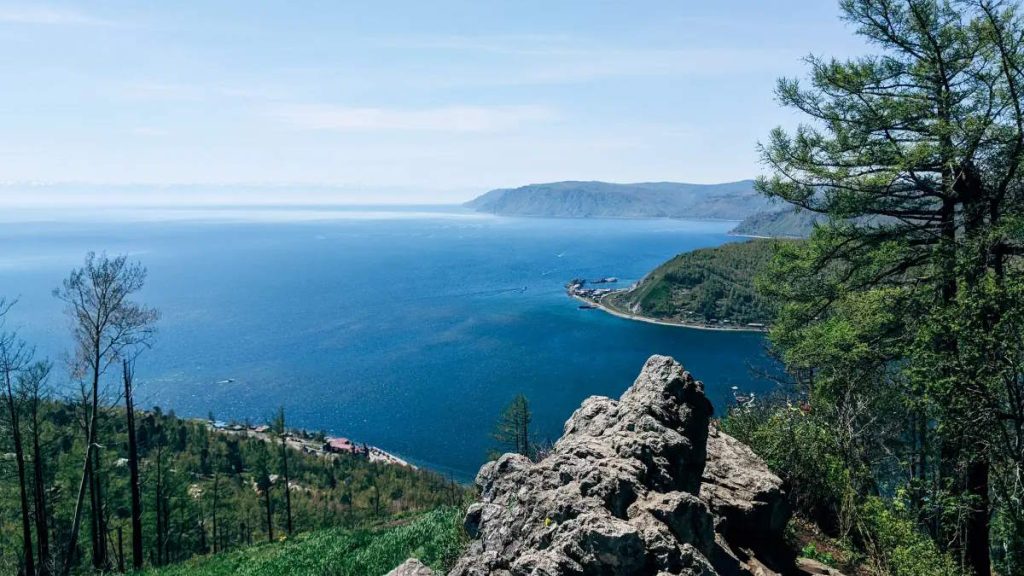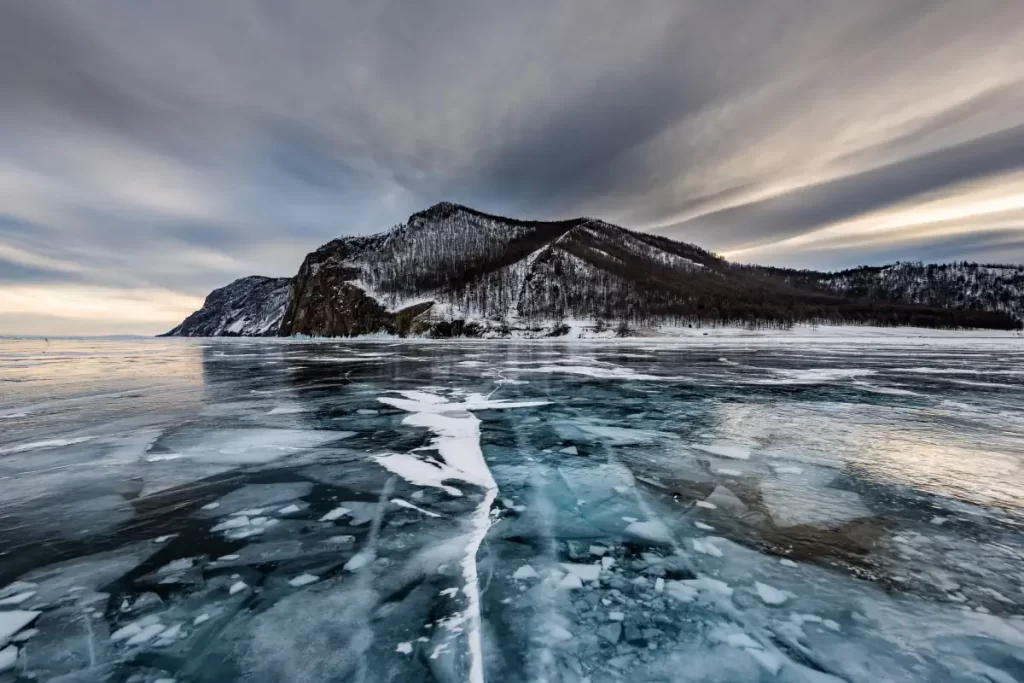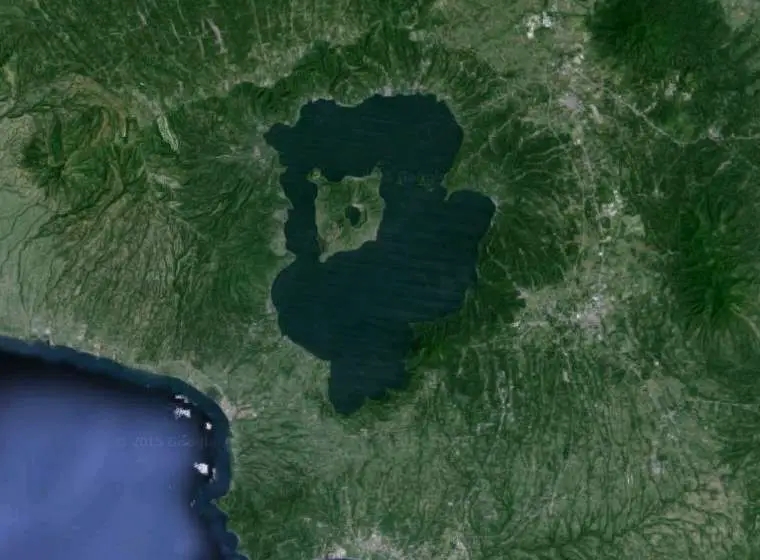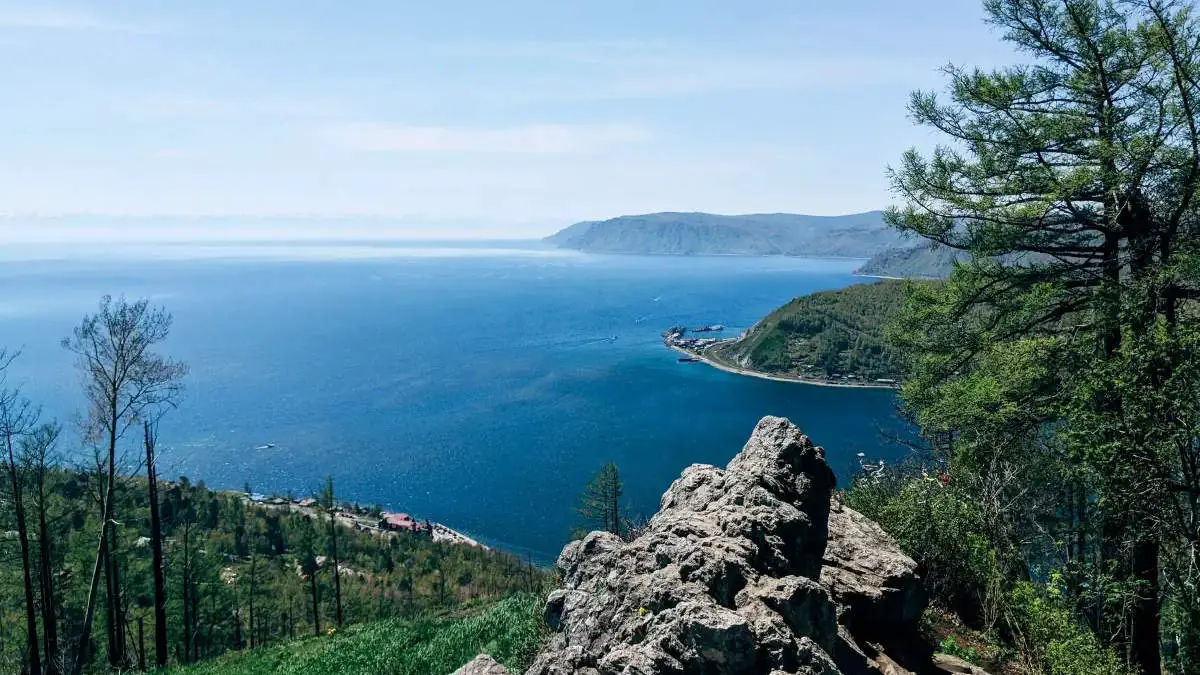Lake Baikal, located in southern Russia, is the world’s deepest and oldest lake, containing over 20% of the world’s unfrozen freshwater. This massive body of water, which is also a UNESCO World Heritage Site, is home to thousands of unique plant and animal species that can only be found in its waters. With its stunning natural beauty and fascinating ecological significance, Lake Baikal is truly a wonder of the world. In this article, we will explore some of the most interesting and surprising Lake Baikal facts that make this place so special.
Lake Baikal has a maximum depth of 1,642 meters (5,387 feet). It is a rift lake in the south of the Russian region of Siberia. Its bottom is 4,215 feet (1,285 meters) below sea level. In terms of volume, Lake Baikal is also the world’s largest freshwater lake; it contains roughly 20% of the world’s unfrozen surface freshwater with 23,615.39 cubic kilometers (5,700 cubic miles). It contains more water than all the North American Great Lakes combined.
For comparison, the deepest lake in the United States is Crater Lake, a volcanic crater in southern Oregon. Its deepest measured depth is 594 meters (1,949 feet). Crater Lake is the ninth deepest lake in the world.

Lake Baikal is estimated to be around 25 million years old and is believed to have formed as a result of tectonic movements in the Earth’s crust. The lake’s crystal-clear water and unique geological features have made it a popular destination for tourists and scientists alike, who come to study its diverse ecosystem and natural history. From the rare freshwater seal to the microscopic plankton, Lake Baikal is home to an incredible variety of life that continues to fascinate and inspire researchers from around the world.
Lake Baikal facts
Here are 10 amazing facts about Lake Baikal:
- Lake Baikal is home to more than 1,700 species of plants and animals, two-thirds of which can be found nowhere else in the world, and was declared a UNESCO World Heritage Site in 1996.
- A rift lake is a lake formed as a result of subsidence related to movement on faults within a rift zone, an area of extensional tectonics in the continental crust. They are often found within rift valleys and may be very deep. Rift lakes may be bounded by large steep cliffs along the fault margins.
- Lake Baikal is covered with ice every winter, typically between January and May. In some places, the ice can be more than 2 meters (6.56 feet) thick.
- The water of Lake Baikal is extraordinarily clean, transparent, and saturated with oxygen. The high transparency is thanks to numerous aquatic organisms purifying the water and making it similar to distilled water. During the winter, the water transparency in open sections can be as much as 30-40 meters (100-130 feet), but during the summer it is typically 5-8 meters (15-25 ft), which is still very impressive!
- As mentioned above, Lake Baikal contains roughly 20% of the world’s unfrozen surface freshwater with 23,615.39 cubic kilometers (5,700 cubic miles). It contains more water than that all the North American Great Lakes combined.
- At 25 million years old, this remarkable lake is also the oldest lake in the world.
- Lake Baikal is also known as the Galapagos of Russia
because its age and isolation produced rich and unusual water wildlife . That’s why the lake is so important for evolutionary science. Occasionally, new species are discovered and it has been estimated that we know of only 70-80% of all the species inhabiting the lake. - It is surrounded by mountain-taiga landscapes, which are also protected to preserve their natural state.
- There are more than 30 rocky islands in Lake Baikal. One of them, Olkhon island is the world’s third-largest island in a lake. Its surface area is 730 km2 (280 sq mi). The lake islands larger than Olkhon are:
- Manitoulin Island in Lake Huron, Canada – 2,766 km2 (1,068 sq mi)
- René-Levasseur Island in the Manicouagan Reservoir, Quebec, Canada – 2,000 km2 (770 sq mi)
- Lake Baikal’s average surface temperature has risen by almost 1.5 °C (2.7 °F) in the last 50 years. As a result, the period when the lake is covered by ice is shorter now.

Lake Baikal from space
In the edition below of Earth from Space, presented by Kelsea Brennan-Wessels from the ESA Web-TV virtual studios, the Sentinel-3A satellite takes us over southern Siberia and the world’s largest freshwater lake: Lake Baikal.
Location of the Lake Baikal
List of the deepest lakes in the world
Here is the list of the 30 deepest lakes in the world and their deepest points:
#. Name :: Country :: Region :: Depth (meters) :: Depth (feet)
- Lake Baikal :: Russia :: Siberia :: 1,642 :: 5,387
- Tanganyika :: Tanzania, Democratic Republic of the Congo, Burundi, Zambia :: Central Africa :: 1,470 :: 4,823
- Caspian Sea :: Iran, Russia, Turkmenistan, Kazakhstan, Azerbaijan :: 1,025 :: 3,363
- Vostok :: Antarctica :: ~1,000 :: ~3,300
- O’Higgins-San Martín :: Chile, Argentina :: Aysén (Chile), Santa Cruz (Argentina) :: 836 :: 2,742
- Malawi :: Mozambique, Tanzania, Malawi :: 706 :: 2,316
- Issyk Kul :: Kyrgyzstan :: 668 :: 2,192
- Great Slave :: Canada :: Northwest Territories :: 614 :: 2,015
- Crater :: United States :: Oregon :: 594 :: 1,949
- Matano :: Indonesia :: Sulawesi :: 590 :: 1,936
- General Carrera-Buenos Aires :: Chile, Argentina :: 586 :: 1,923
- Hornindalsvatnet :: Norway :: Sogn og Fjordane :: 514 :: 1,686
- Quesnel :: Canada :: British Columbia :: 506 :: 1,660
- Toba :: Indonesia :: Sumatra :: 505 :: 1,657 and Sarez :: Tajikistan :: 505 :: 1,657
- Tahoe :: United States :: California, Nevada :: 501 :: 1,645
- Argentino :: Argentina :: Santa Cruz (Patagonia) :: 500 :: 1,640
- Kivu :: Democratic Republic of the Congo, Rwanda :: 480 :: 1,575
- Grand :: Canada :: Newfoundland :: 475 :: 1,558
- Mjøsa :: Norway :: Hedmark, Oppland and Akershus counties :: 468 :: 1,535
- Salsvatn :: Norway :: Nord-Trøndelag county :: 464 :: 1,523 and Nahuel Huapi :: Argentina :: Rio Negro, Patagonia :: 464 :: 1,523
- Hauroko :: New Zealand :: Southland (South Island) :: 462 :: 1,516
- Cochrane / Pueyrredón :: Chile, Argentina :: Aysén (Chile), Santa Cruz (Argentina) :: 460 :: 1,509 and Tinnsjø :: Norway :: Telemark county :: 460 :: 1,509
- Adams :: Canada :: British Columbia :: 457 :: 1,499
- Chelan :: United States :: Washington (state) :: 453 :: 1,486
- Van :: Turkey :: 451 :: 1,480
- Poso :: Indonesia :: Sulawesi :: 450 :: 1,476
- Fagnano :: Argentina, Chile :: Tierra del Fuego :: 449 :: 1,473
- Great Bear :: Canada :: Northwest Territories :: 446 :: 1,463
- Manapouri :: New Zealand :: Southland (South Island) :: 444 :: 1,457
- Te Anau :: New Zealand :: Southland (South Island) :: 425 :: 1,390

Sources
- Lake Baikal on Wikipedia
- Rift lake on Wikipedia
- List of lakes by depth on Wikipedia
- How Many Elephants are Left in the World in 2025? - August 17, 2025
- Moon Landings: All-Time List [1966-2025] - February 2, 2025
- What Is Max-Q and Why Is It Important During Rocket Launches? - January 16, 2025
